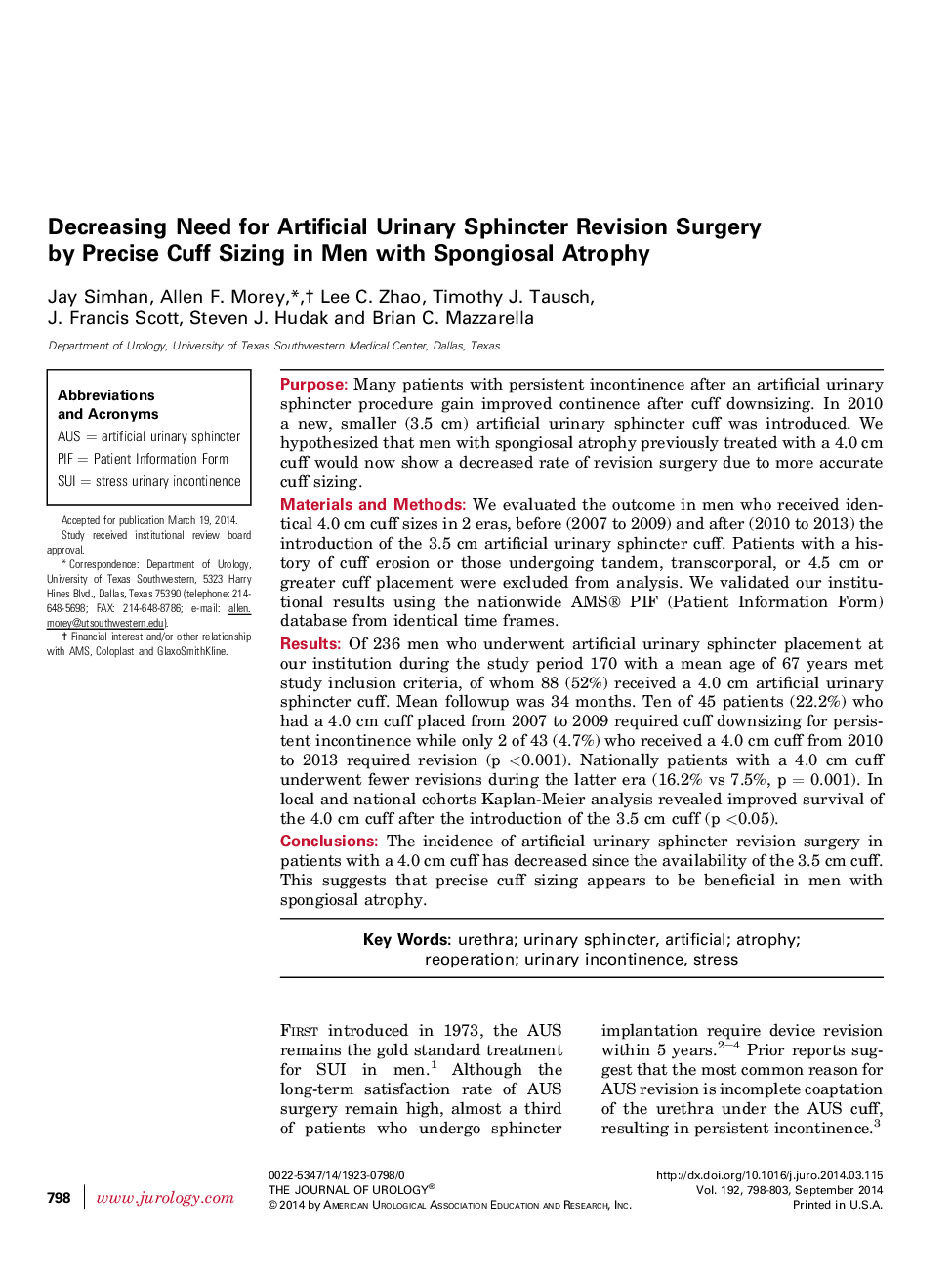| Article ID | Journal | Published Year | Pages | File Type |
|---|---|---|---|---|
| 3860354 | The Journal of Urology | 2014 | 6 Pages |
PurposeMany patients with persistent incontinence after an artificial urinary sphincter procedure gain improved continence after cuff downsizing. In 2010 a new, smaller (3.5 cm) artificial urinary sphincter cuff was introduced. We hypothesized that men with spongiosal atrophy previously treated with a 4.0 cm cuff would now show a decreased rate of revision surgery due to more accurate cuff sizing.Materials and MethodsWe evaluated the outcome in men who received identical 4.0 cm cuff sizes in 2 eras, before (2007 to 2009) and after (2010 to 2013) the introduction of the 3.5 cm artificial urinary sphincter cuff. Patients with a history of cuff erosion or those undergoing tandem, transcorporal, or 4.5 cm or greater cuff placement were excluded from analysis. We validated our institutional results using the nationwide AMS® PIF (Patient Information Form) database from identical time frames.ResultsOf 236 men who underwent artificial urinary sphincter placement at our institution during the study period 170 with a mean age of 67 years met study inclusion criteria, of whom 88 (52%) received a 4.0 cm artificial urinary sphincter cuff. Mean followup was 34 months. Ten of 45 patients (22.2%) who had a 4.0 cm cuff placed from 2007 to 2009 required cuff downsizing for persistent incontinence while only 2 of 43 (4.7%) who received a 4.0 cm cuff from 2010 to 2013 required revision (p <0.001). Nationally patients with a 4.0 cm cuff underwent fewer revisions during the latter era (16.2% vs 7.5%, p = 0.001). In local and national cohorts Kaplan-Meier analysis revealed improved survival of the 4.0 cm cuff after the introduction of the 3.5 cm cuff (p <0.05).ConclusionsThe incidence of artificial urinary sphincter revision surgery in patients with a 4.0 cm cuff has decreased since the availability of the 3.5 cm cuff. This suggests that precise cuff sizing appears to be beneficial in men with spongiosal atrophy.
